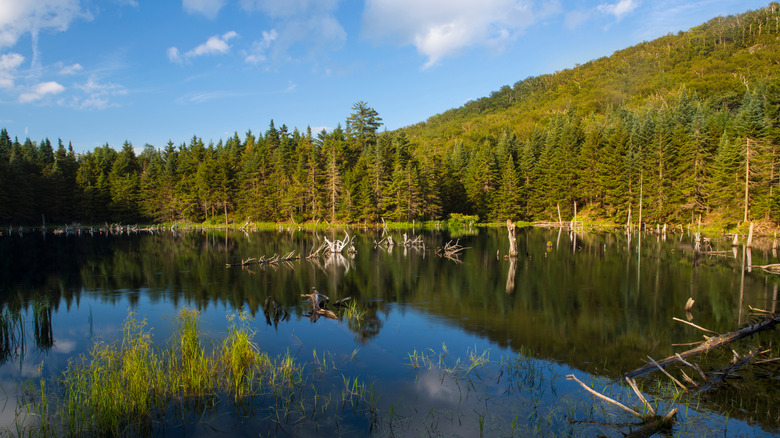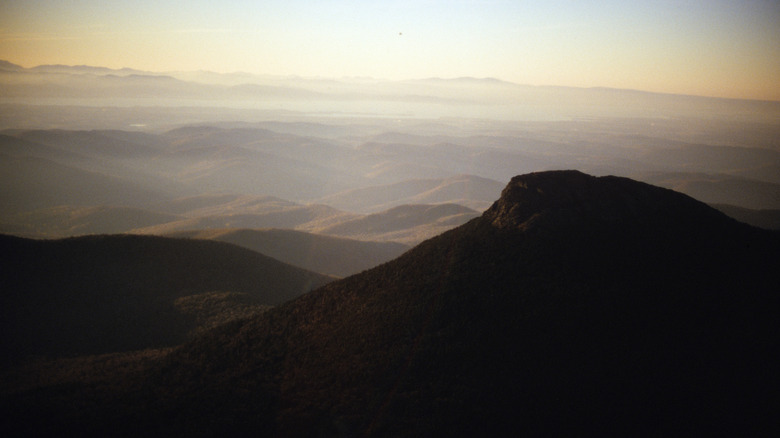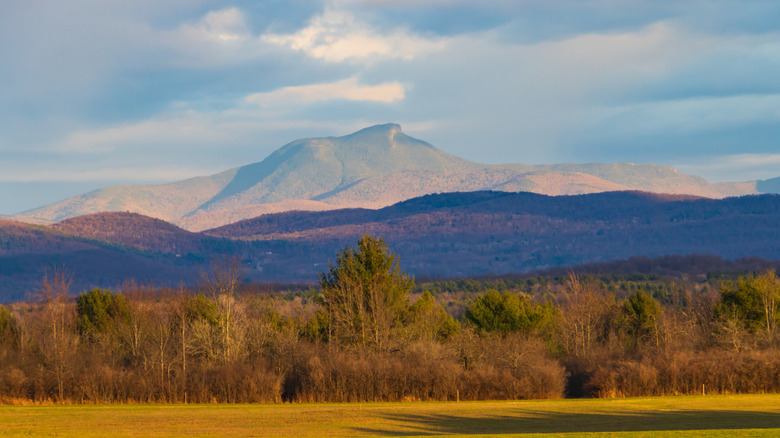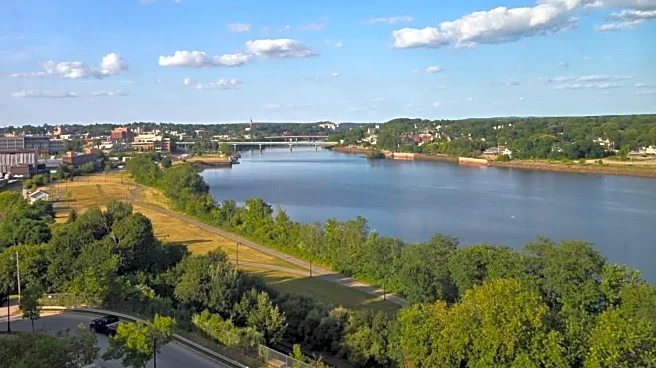
Vermont's magical mountain forests and cozy New England charm more than live up to the nickname "The Green Mountain State." If you're looking for the most exquisite slices of New England beauty, Vermont has everything from the storybook college town of Middlebury and its cute shops and art galleries, to magnificent natural wonders like the breathtaking and recreation-rich Quechee Gorge. Vermont's magical Green Mountains are fertile enough to hide plenty of hidden treasures in plain sight. Camel's
Hump State Park, for example, does not feature any state records, like Vermont's high point at Mount Mansfield. However, Camel's Hump State Park and its titular mountain have a strong case to be the state's most eye-catching spectacle.
The uniquely-named Camel's Hump mountain is a bit more recognizable than most other mountains in Vermont. While the Green Mountains certainly have some distinctive summits, Camel's Hump has long served as a major landmark for its unusual geological structure and prominent profile against the horizon. More than its novelty appearance, however, Camel's Hump boasts many of the most splendid natural features of any Vermont mountain. Across the mountain's summit are notable collections of stark alpine tundra, juxtaposed against the rich greenery of the forests below for a truly attention-grabbing profile. This dream-like mountain setting complements the mountain's lovely waterways for truly photo-worthy shots. Plus, the mountain's state park status affords it a network of excellent scenic hiking trails that rank among the best in New England.
Read more: 5 Of The Best Breweries Across Vermont
Uncover A Hidden Gem In Vermont's Green Mountains

Camel's Hump State Park's 33 square miles center around its eponymous mountain with the whimsical name of Camel's Hump. Reaching an altitude of 4,083 feet, Camel's Hump is Vermont's third-highest mountain (though it shares that ranking with Mount Ellen, also 4,083 feet high). However, Camel's Hump is much more than merely a Vermont state high point. Thanks to the hard work of ancient glacier flows, the mountain's summit has been carved into a distinctive "two-hump" profile, with a lower smooth "hump" and a higher, more vertical "hump" side by side atop the peak. As arguably the most recognizable mountain in Vermont, Camel's Hump is displayed prominently on the Vermont Coat of Arms, the Vermont flag, and the Vermont state quarter (among other things).
Camel's Hump is not just famous, however. It's also the only undeveloped 4,000-foot mountain in Vermont. At the same time, the mountain's complex climate and topography make it one of the most alluring mountain experiences in New England. Though it barely tops out over 4,000 feet, Camel's Hump has a prominent treeline that leaves its summit largely bare, with only a rocky tundra decorating its higher-up regions. This not only provides an even more distinctive profile, but also creates one of Vermont's greatest natural observatories. Without obstructive trees blocking the view, the Camel's Hump summit provides exceptional views of the Vermont landscape in all directions, and even (on clear days) into New York's Adirondacks. As part of Vermont's divine Green Mountains, Camel's Hump is surrounded by storybook forests and soul-stirring peaks. Much of the woodlands around the mountain are part of the larger Camel's Hump State Forest, which offers even more immersive experiences through Vermont's pristine natural setting.
Experience The Best Of Vermont's Outdoor Adventures

Although it protects Vermont's only undeveloped 4,000-foot mountain, Camel's Hump State Park nonetheless has numerous superb hiking trails. Specifically, there are multiple hiking routes to Camel's Hump's summit, making it one of the more accessible summits in Vermont despite its pristine nature. Though the trails to the summit are, perhaps unsurprisingly, more difficult hiking challenges, most are only between 2 and 6 miles long. This means that, if you're willing to put in the work to ascend 4,000 feet, you can usually hike to the summit and back in a few hours. The Monroe Trail and Burrows Trail are both under four miles, and both provide (relatively) manageable access to the summit. If you are looking for easier hikes through the park's gorgeous forest scenery, you can also explore less challenging routes like the Honey Hollow and Forest City Trails.
In terms of overnight stays, camping in Camel's Hump State Park is only authorized at specific Green Mountain Club shelters and lodges in and around the park, while primitive camping is allowed in certain low-elevation areas a sufficient distance from trails (per Vermont's primitive camping guidelines). You don't need to endure primitive camping to enjoy Camel's Hump State Park, however. For all its pristine and undeveloped character, Camel's Hump is less than an hour's drive from Burlington. You can therefore enjoy Burlington's modern hotels and lodging options while making the easy drive to one of the state's best mountain parks. As Vermont's largest city, Burlington offers artsy urban vacations in the middle of stunning mountains like Camel's Hump. If you manage your time well, you can summit Camel's Hump and enjoy dinner in one of Burlington's top restaurants all in the same day.
Ready to discover more hidden gems and expert travel tips? Subscribe to our free newsletter for access to the world's best-kept travel secrets.
Read the original article on Islands.













